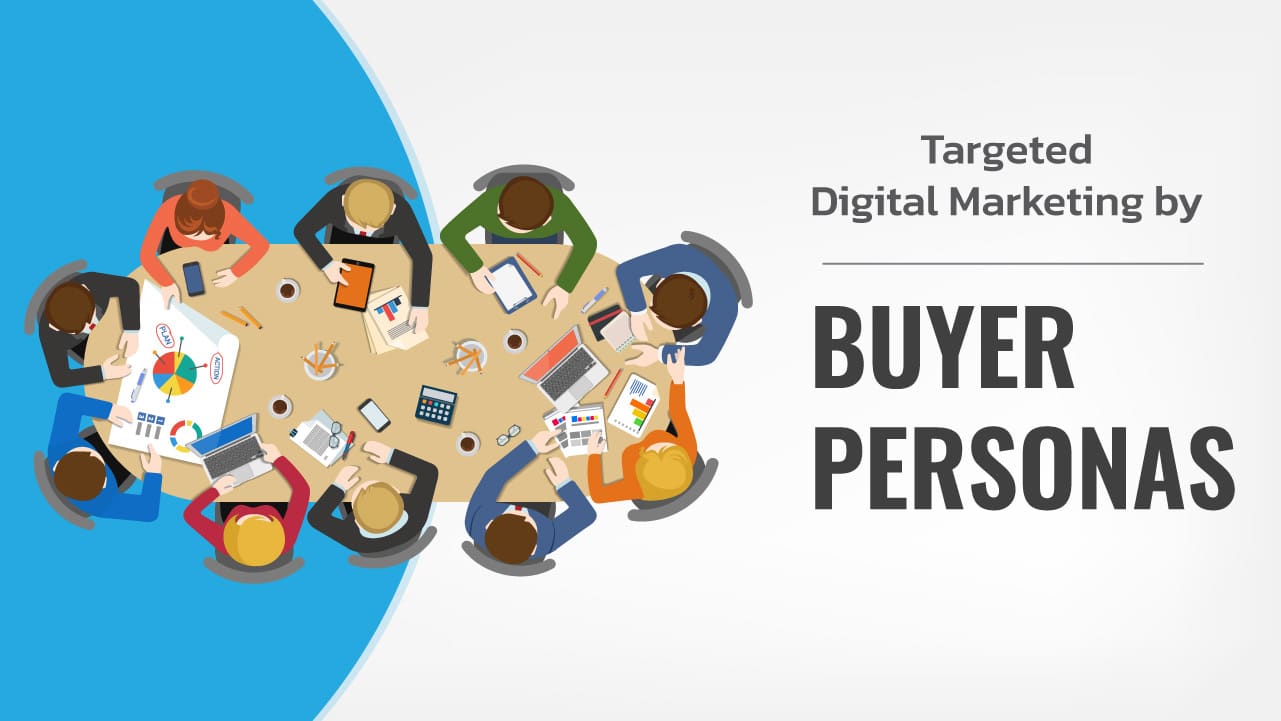How to Define Accurate Buyer Personas for Strategic Branding
Defining accurate buyer personas involves detailed research into customer demographics, behaviors, and needs. This process helps create targeted branding strategies that resonate with specific segments, enhancing engagement and effectiveness in marketing campaigns.

Defining accurate buyer personas is a critical step in strategic branding. Buyer personas are semi-fictional representations of your ideal customers, created based on data and research. They help you understand your target audience better, allowing for more effective and targeted branding strategies. This article will guide you through the process of defining accurate buyer personas and explain their importance in strategic branding.
Understanding Buyer Personas
Buyer personas are detailed profiles that represent different segments of your target audience. They are created based on a combination of market research, customer data, and insights from your sales and marketing teams. Each persona typically includes demographic information, behavior patterns, motivations, challenges, and preferences.
Why Are Buyer Personas Important?
Buyer personas are important because they:
- Guide Branding and Messaging: Provide a clear understanding of who your target audience is, helping to tailor your branding and messaging.
- Enhance Marketing Strategies: Enable more precise targeting and personalization of marketing efforts.
- Improve Product Development: Inform product features and improvements based on the needs and preferences of your ideal customers.
- Increase Customer Engagement: Foster deeper connections with your audience by addressing their specific pain points and desires.
Steps to Define Accurate Buyer Personas
Conduct Market Research
Start by conducting market research to gather data about your industry, competitors, and target audience. This can include:
- Industry Reports: Analyze reports and studies related to your industry.
- Competitor Analysis: Examine competitors' target audiences and their strategies.
- Customer Surveys: Collect feedback from existing customers to understand their needs and preferences.
Gather and Analyze Customer Data
Use customer data from various sources to create detailed personas. This data can come from:
- CRM Systems: Analyze data from customer relationship management systems.
- Social Media Analytics: Review insights from social media platforms.
- Website Analytics: Examine website traffic and user behavior data.
Identify Key Demographics
Determine the key demographics of your target audience, including:
- Age: Understand the age range of your ideal customers.
- Gender: Identify if there are gender-specific preferences.
- Location: Determine geographic locations that are relevant to your market.
- Occupation and Income: Analyze job roles, industries, and income levels.
Understand Behavior Patterns
Analyze behavior patterns to gain insights into how your audience interacts with your brand and competitors. Consider:
- Buying Habits: Identify how frequently and through what channels they make purchases.
- Product Usage: Understand how they use your products or services.
- Brand Interactions: Determine how they engage with your brand through various touchpoints.
Define Motivations and Challenges
Identify the motivations and challenges of your buyer personas. This includes:
- Goals and Aspirations: What are their primary goals and aspirations related to your products or services?
- Pain Points: What challenges or problems are they looking to solve?
- Values and Preferences: What values are important to them, and what do they look for in a brand?
Create Detailed Persona Profiles
Develop detailed persona profiles that include:
- Name and Background: Give each persona a name and background story to humanize them.
- Demographics: Include key demographic information.
- Behavior and Preferences: Detail their behavior patterns, preferences, and interactions with your brand.
- Motivations and Challenges: Outline their goals, pain points, and values.
Validate and Refine Personas
Validate and refine your buyer personas by:
- Testing: Use A/B testing and other methods to validate your personas' accuracy.
- Feedback: Gather feedback from your sales and marketing teams, as well as from customers.
- Updates: Regularly update your personas based on new data and insights.
Using Buyer Personas in Strategic Branding
Tailor Branding and Messaging
Use buyer personas to tailor your branding and messaging to resonate with your target audience. This involves:
- Crafting Relevant Messages: Develop messages that address the specific needs, motivations, and pain points of each persona.
- Designing Effective Visuals: Create visuals and design elements that appeal to your personas' preferences and expectations.
Optimize Marketing Strategies
Optimize marketing strategies by aligning them with your buyer personas. This includes:
- Targeted Campaigns: Develop targeted marketing campaigns that speak directly to each persona.
- Personalized Content: Create content that is relevant and valuable to your personas.
Enhance Product Development
Inform product development by incorporating insights from your buyer personas. This can help you:
- Develop Features: Design product features and improvements based on the needs and preferences of your personas.
- Solve Pain Points: Address the specific challenges and problems faced by your personas.
Improve Customer Engagement
Enhance customer engagement by:
- Personalizing Interactions: Tailor interactions and communications to address the interests and needs of your personas.
- Building Relationships: Foster deeper connections with your audience through personalized and relevant experiences.
Defining accurate buyer personas is a crucial step in strategic branding. By understanding your target audience through detailed personas, you can tailor your branding, marketing, and product development efforts to better meet their needs and preferences. This leads to more effective and targeted strategies, improved customer engagement, and ultimately, greater business success.
FAQs
What is a buyer persona?
A buyer persona is a semi-fictional representation of your ideal customer, based on data and research. It includes detailed information about demographics, behavior patterns, motivations, challenges, and preferences to help businesses understand and target their audience more effectively.
Why are buyer personas important for branding?
Buyer personas are important for branding because they:
- Guide Branding Strategies: Help tailor branding and messaging to resonate with specific audience segments.
- Enhance Marketing Efforts: Enable more targeted and personalized marketing strategies.
- Inform Product Development: Provide insights into customer needs and preferences, influencing product features and improvements.
- Boost Customer Engagement: Foster deeper connections by addressing the specific needs and pain points of your audience.
How do you create a buyer persona?
To create a buyer persona, follow these steps:
- Conduct Market Research: Gather data about your industry, competitors, and target audience.
- Analyze Customer Data: Use data from CRM systems, social media, and website analytics.
- Identify Key Demographics: Determine age, gender, location, occupation, and income.
- Understand Behavior Patterns: Analyze buying habits, product usage, and brand interactions.
- Define Motivations and Challenges: Identify goals, pain points, values, and preferences.
- Create Detailed Profiles: Develop comprehensive profiles with names, backgrounds, and relevant details.
- Validate and Refine: Test, gather feedback, and update personas based on new data.
What information should be included in a buyer persona?
A buyer persona should include:
- Name and Background: A fictional name and background story.
- Demographics: Age, gender, location, occupation, and income.
- Behavior Patterns: Buying habits, product usage, and brand interactions.
- Motivations and Challenges: Goals, pain points, values, and preferences.
How can buyer personas be used in strategic branding?
Buyer personas can be used in strategic branding to:
- Tailor Branding and Messaging: Craft messages and visuals that resonate with each persona.
- Optimize Marketing Strategies: Develop targeted campaigns and personalized content.
- Enhance Product Development: Design features and improvements based on persona insights.
- Improve Customer Engagement: Personalize interactions and build stronger relationships.
How often should buyer personas be updated?
Buyer personas should be updated regularly to reflect changes in market conditions, consumer behavior, and business objectives. Regular reviews and updates ensure that personas remain accurate and relevant.
What are common mistakes when creating buyer personas?
Common mistakes include:
- Lack of Research: Failing to gather sufficient data and insights.
- Overgeneralization: Creating personas that are too broad and not specific enough.
- Ignoring Feedback: Not incorporating feedback from sales, marketing teams, or customers.
- Neglecting Updates: Failing to update personas based on new data and changing market conditions.
How can companies validate their buyer personas?
Companies can validate buyer personas by:
- Testing: Using A/B testing and other methods to check the accuracy of personas.
- Gathering Feedback: Obtaining input from sales and marketing teams, as well as from customers.
- Analyzing Performance: Monitoring the effectiveness of marketing strategies and making adjustments based on results.
What are the benefits of using buyer personas in branding?
The benefits include:
- Improved Targeting: More precise targeting of marketing and branding efforts.
- Enhanced Personalization: Better alignment of messaging and content with audience needs.
- Informed Decision-Making: Data-driven insights for product development and strategy.
- Increased Engagement: Stronger connections with customers through tailored experiences.
Get in Touch
Website – https://www.webinfomatrix.com
Mobile - +91 9212306116
Whatsapp – https://call.whatsapp.com/voice/9rqVJyqSNMhpdFkKPZGYKj
Skype – shalabh.mishra
Telegram – shalabhmishra
Email - info@webinfomatrix.com
What's Your Reaction?



















.jpg)
.jpg)

